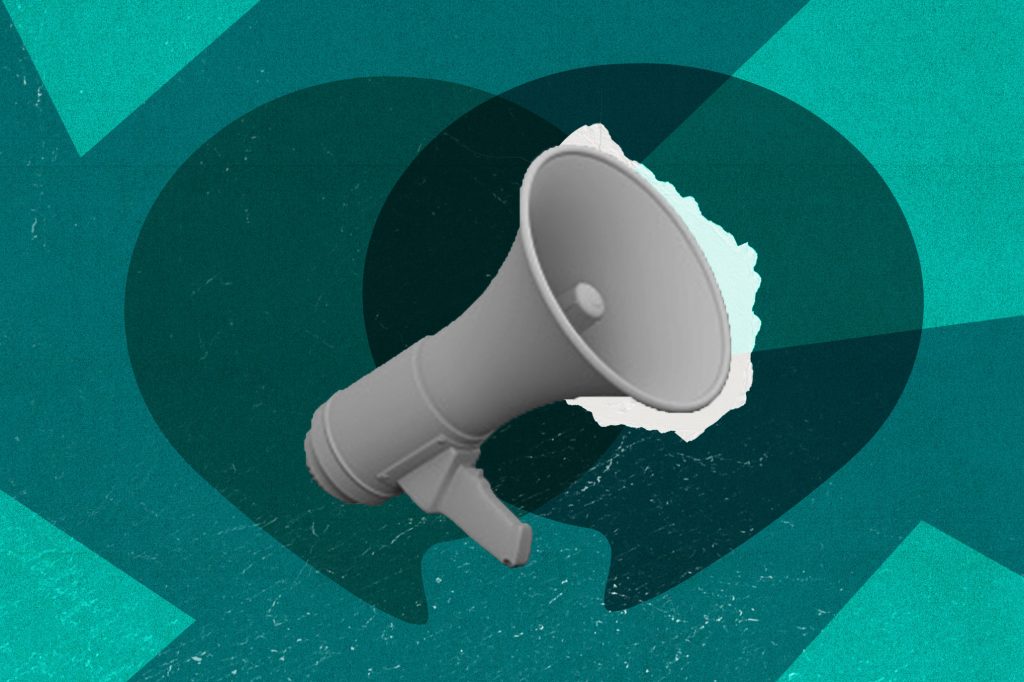Our Healthcare System Can’t Manage This Crisis Alone
Why a product-thinking mindset matters when our health-care system is in crisis.
Natasha Shields is vice president of product at Audacy. She is a former product manager at The Washington Post and is a Long Dash alum.
We know from experience that tragic events leave deep fissures far beyond the event itself. I remember traveling a few days following the September 11th attack on the United States and experiencing a deeply pessimistic sense of desolation. In retrospect, that tragedy has touched more than just our emotional lives—it changed our behavior and the way we examine global threats. Other tragedies, like Hurricane Katrina, have reshaped our worldview and subsequent actions in much the same way. Undoubtedly, the coronavirus pandemic will have equal or even greater effects on our society.
Much of this change will be driven by healthcare brands—the world is expecting them to show courageous leadership and unparalleled innovation. These organizations must be flexible and adaptive given the rapidly emerging threats to our well-being. They must face these threats directly. As former Supreme Court Justice William J. Brennan, Jr. once said, “We must meet the challenge rather than wish it were not before us.”
As the wife of a physician on the front lines, I recognize my husband and our family are now at greater risk given his clinical responsibilities and duty to the public at large. But as a product leader, I look at the coronavirus crisis and immediately think of the Jobs-To-Be-Done approach and how effectively this particular framework can help to serve the needs of all who are impacted by this deadly pandemic.
The Jobs-To-Be-Done framework, pioneered by management consultant Tony Ulwick, posits that customers “hire” a company to provide a product if it helps them get something tangible done. Brands, Ulwick claims, should focus less on trying to guess which new shiny object might capture their customers’ attention, and more on identifying the underlying job that those customers actually need done. Specific products and solutions come and go, but the fundamental needs that necessitate those solutions remain relatively stable.
It’s true that many frameworks already put users first. But Jobs-To-Be-Done takes this customer-centricity further by shining a bright light on the motivating factors that drive customers to interact with a product in the first place. Although many companies choose to discard this framework in favor of more immediately attractive product-centric models, I believe the coronavirus crisis underscores the need for the Jobs-To-Be-Done framework.
A number of brands are already standing out, ensuring their long-term viability and genuinely meeting their customers’ needs through intentional innovation. These examples offer valuable lessons for any organization trying to navigate this crisis—and serve as a model for how organizations can meaningfully and authentically meet audience needs beyond their core service or product going forward. Let’s take a look at some of the most successful examples.
Job to be done: Identify gaps in coronavirus testing
Despite the wide-reaching impact of the coronavirus, most experts remain in the dark with regards to how many people are actually infected. Due in part to a hastily prepared public response, several brands have innovated to help address emerging needs. We’ve seen a number of brands realize that identifying gaps in coronavirus testing numbers is a real job that needs to get done—consumers cannot regain their confidence without these numbers publicly available.
- The University of Washington School of Medicine recognized its proximity to one of the worst coronavirus outbreaks in the U.S. and understood that more testing was a real Job-To-Be-Done. Leaning on the expertise of faculty and staff, the medical school created its own COVID-19 test and helped the state’s leaders identify even more cases in the area.
- The U.K.-based startup, Zoe, developed an app in response to the need for public self-reporting of COVID-19 symptoms. The new app is designed to aid medical researchers in pinpointing exactly where the most demanding needs are located. Its 750,000 downloads within 24 hours reinforces the value companies can create when they release timely products that respond intentionally to their customers’ real needs.
- David Skorton, M.D., President and CEO, and David A. Acosta, M.D., Chief Diversity and Inclusion Officer of the Association of American Medical Colleges (AAMC), have underscored the imperative to centralize and collect national metrics to better understand and address the disproportionate effects of the pandemic upon communities of color and people in socio-economically disadvantaged conditions. Alexis Madrigal and Robinson Meyer, two Atlantic journalists, understood this early on in the crisis and executed on the need for making comprehensive testing metrics readily available by spearheading The Atlantic’s COVID Tracking Project. Alongside another Atlantic colleague, Ibram Kendi, the COVID Racial Data Tracker, a derivative measurement tool, was also born. These tools have quickly become essential resources for news and health-focused organizations seeking community-specific data. (Note: AAMC is a Long Dash client.)
- In a proactive move, following its decision to be one of the first to ground its fleet, Emirates Airlines is beginning to pilot rapid blood testing and produce results in 10 minutes for passengers who require a test certificate to enter certain countries.
Job to be done: Continue treatment for pre-existing or recurring conditions
While the healthcare sector’s attention is focused firmly on the coronavirus pandemic unfolding before us, we must not forget that people with pre-existing medical conditions still require attention and treatment from their regular care providers. These non-coronavirus medical needs will not suddenly disappear as the sector prioritizes new challenges. Leading healthcare brands are addressing this Job-To-Be-Done without losing sight of the more immediate threats posed by the virus.
- Mount Sinai Hospital in New York City, which is considered the U.S. epicenter of COVID-19, has spun up Mount Sinai NOW, a virtual experience that allows people to remain in quarantine while meeting with their healthcare providers through video, text, and online options. Patients who have ongoing health care needs value the opportunity to continue having their issues addressed despite this crisis. Over the last 30 days, the use of telehealth has soared and is projected to alter patient and provider expectations in the future.
- In anticipation of patient overflow, Vermont’s National Guard was called upon to help transform a convention center into an alternate healthcare facility almost overnight. This new facility provides an isolated locality which serves to free up overwhelmed resources.
- Even the public sector is responding to this particular Job-To-Be-Done. The Centers for Medicare and Medicaid Services have lifted the regulatory burden for health organizations to serve patients using digital means in an effort to limit risk and exposure to COVID-19. Previously, healthcare providers were reimbursed in a restricted manner based on whether or not the person receiving services lived in a specified rural area. Today those reimbursements are much easier to claim.
Sign up for OnBrand
Our weekly digest featuring ideas on the future of brand.
Job to be done: Increase availability of lifesaving products
While most efforts have been to combat the invisible threat of coronavirus, our tools are distinctly physical and material. If companies are unable to meet the need for more life saving products, such as masks, ventilators, and non-perishable meals, the fight against this pandemic will be in vain. Fortunately, many companies (some of whom are not healthcare brands at all) are understanding that this is a real Job-To-Be-Done, and are dramatically pivoting their operations to address that job.
- Cook Medical is shifting its medical product manufacturing to increase supplies related to critical and emergency care.
- A completely new approach to protective mask decontamination was created over a dinner table and put into place by way of a partnership between the OhioHealth system and Battelle, a non-profit research organization. The method is thought to be a “game-changer” in reusing protective equipment for front line healthcare workers when supplies are limited.
- A number of consumer brands have adapted to fulfill this job: New Balance is manufacturing face masks, General Motors has transitioned into the mass production of ventilators, and locally in D.C., the Punjab Grill takes fresh meals to a common location to serve people who are experiencing homelessness, among many others.
This will not be the last time the healthcare system is challenged with a catastrophic disease outbreak. Spanish Flu, SARS, MERS, Ebola, and Zika all required a combination of government and private industry contributions to end this kind of threat.
In order to adequately address the tremendous burden of caring for patients and customers, healthcare brands must double down on rapid decision making, create valuable experiences that address urgent needs, and harness their capacity for generosity.
The product lines and services in which organizations are traditionally successful will continue. But people’s needs are evolving, and there is no better or more important time for healthcare brands to identify those needs and fulfill them as Jobs-To-Be-Done. This framework is critical to helping organizations narrow their focus and think creatively about the “jobs” they’re best positioned to do beyond their core products and services. Adopting this approach will not only best position organizations to be of service right now, but further innovation, deepen trust between brands and people, and build loyalty that extends beyond the crisis.
As Americans, we have always risen to the challenges that confront us with intellect and determination. This global pandemic is an occasion to reestablish the ties that bind us to one another and get the job done.



